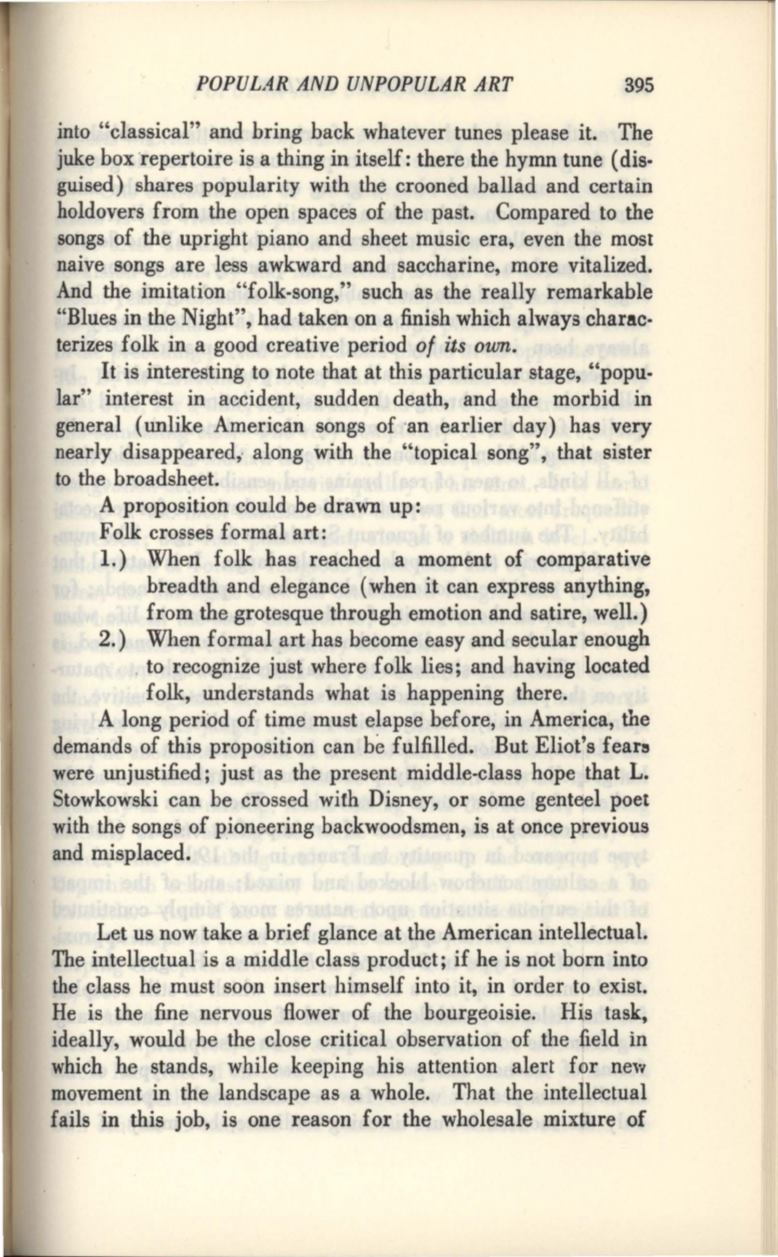
POPULAR AND UNPOPULAR ART
395
into "classical" and bring back whatever tunes please it. The
juke box ·repertoire is a thing in itself: there the hymn tune (dis–
guised) shares popularity with the crooned ballad and certain
holdovers from the open spaces of the past. Compared to the
songs of the upright piano and sheet music era, even the most
naive songs are less awkward and saccharine, more vitalized.
And the imitation "folk-song," such as the really remarkable
"Blues in the Night", had taken on a finish which always charac–
terizes folk in a good creative period
of its own.
It is interesting to note that at this particular stage, "popu–
lar" interest in accident, sudden death, and the morbid in
general (unlike American songs of ·an earlier day) has very
nearly disappeared,. along with the "topical song", that sister
to the broadsheet.
A proposition could be drawn up:
Folk crosses formal art:
1.)
When folk has reached a moment of comparative
breadth and elegance (when it can express anything,
from the grotesque through emotion and satire, well.)
2.) When formal art has become easy and secular enough
. to recognize just where folk lies; and having located
folk, understands what is happening there.
A long period of time must elapse before, in America, the
demands of this proposition can be fulfilled. But Eliot's fears
were unjustified; just as the present middle-class hope that
L.
Stowkowski can be crossed with Disney, or some genteel poet
with the songs of pioneering backwoodsmen, is at once previous
and misplaced.
Let us now take a brief glance at the American intellectual.
The intellectual is a middle class product; if he is not born into
the class he must soon insert himself into it, in order to exist.
He is the fine nervous flower of the bourgeoisie. His task,
ideally, would be the close critical observation of the field in
which he stands, while keeping his attention alert for new
movement in the landscape as a whole. That the intellectual
fails in this job, is one reason for the wholesale mixture of


